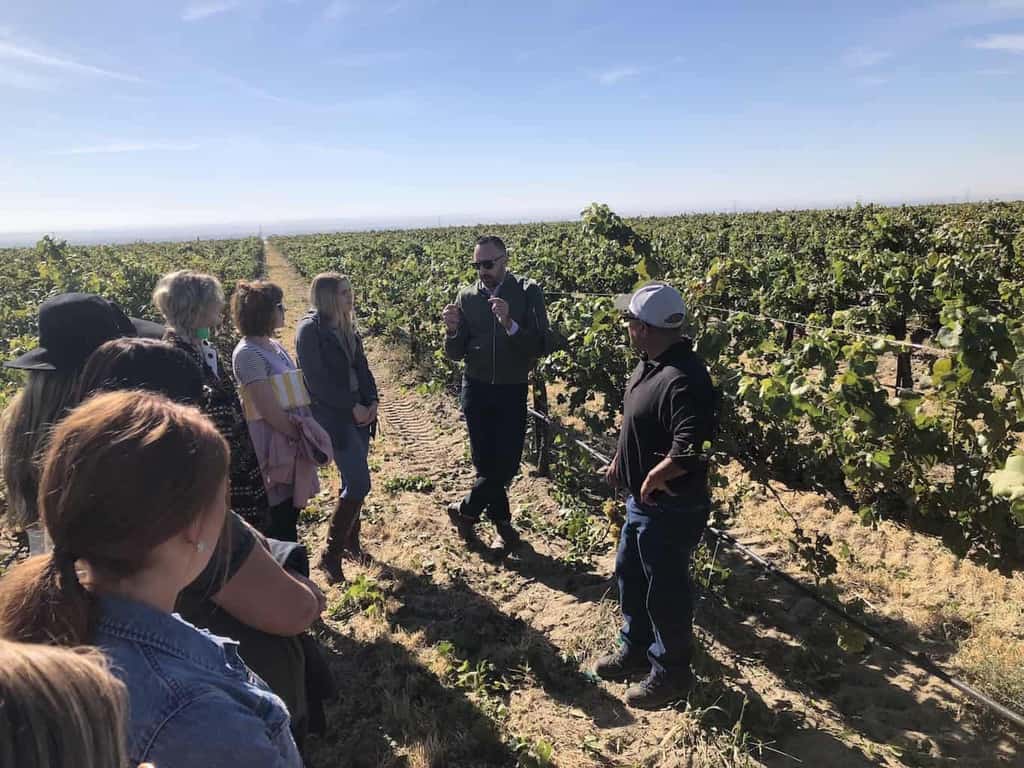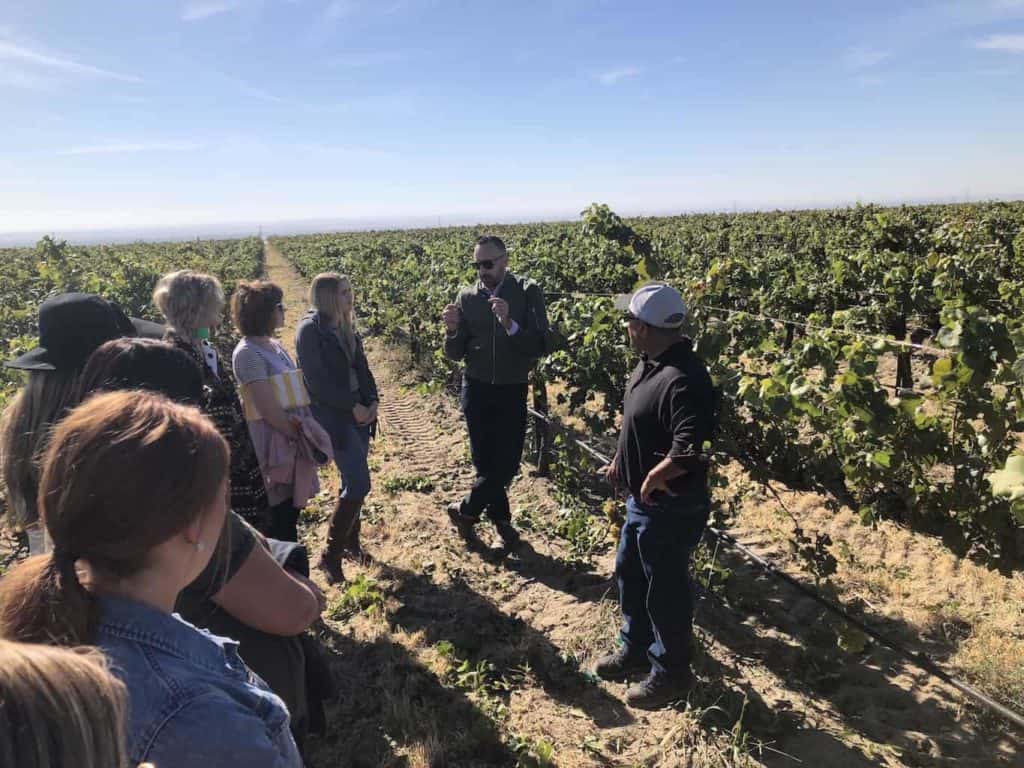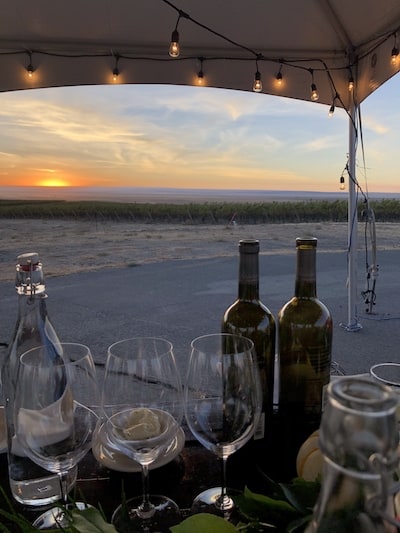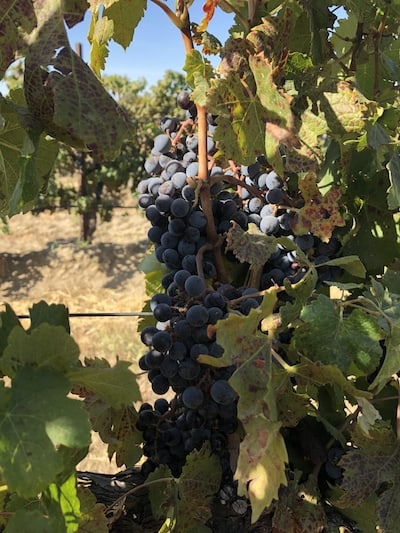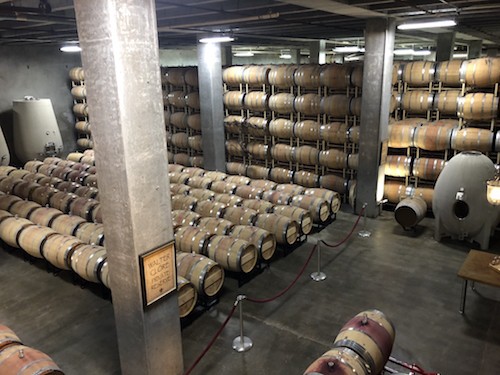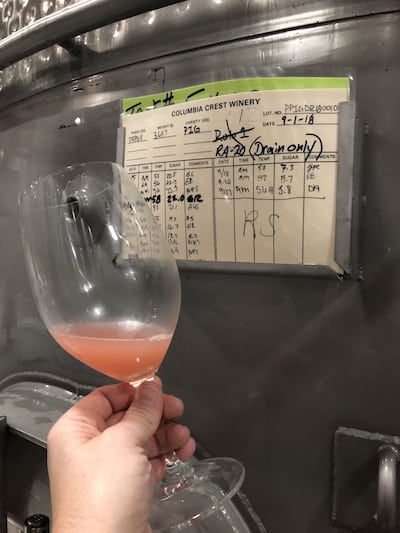We’ve all heard the term “crush” thrown around most of our lives, from that kid down the street you had a crush on in fourth grade, to the project you crushed at work this week. But during the harvest season, crush takes on a very different meaning in wine country.
Depending on which winemaker or wine expert you talk to, crush has a variety of definitions. Some winemakers will refer to the entire harvest, from picking the grapes through fermentation to bottling, as the crush. For others, the crush refers to the destemming process in which the stems are removed, grape skins are slightly broken, and the juice has some initial contact with the skins. And then there’s those that refer to the crush as the entire picking and pressing process.
Regardless, the crush happens during harvest, and if you have opportunity to experience one you’ll gain a much greater appreciation for the beauty in your glass. Until then, Winetraveler is excited to share one of the several crush experiences we enjoyed this season to whet your appetite.
Columbia Crest Winery, Paterson, Washington
Washington State is the nation’s second largest wine producer with more than 55,000 acres of wine grape producing vineyards, over 940 wineries and 14 AVA’s producing roughly 17.1 million cases of wine each year. The state’s geography is particularly ideal for growing grapes with its warm sunny days and cool nights. That’s right – sunny days! This is not Seattle weather. While the western part of the state can get upwards of 35 inches of rain a year, the eastern region, where most the majority of the grapes grow, sees more than 300 days of sun per year. In fact, Eastern Washington typically averages an hour more sun per day during the grape growing season than California and only up to nine inches of rain per year. These ideal weather conditions combined with Washington’s unique soils and elevations provide the foundation for developing award-winning aromas and flavors in the ripening grapes.
RELATED: How To Visit Columbia Crest Winery in Washington State
Incidentally, located in Eastern Washington, in the Columbia Valley, is where you’ll find the first Washington State winery to win Wine Spectator‘s No. 1 Wine in the World designation: Columbia Crest, which won for its 2005 Reserve Cabernet Sauvignon. Established in 1983, Columbia Crest is one of the largest wineries in the state with more than 2,500 acres of vineyards and one of the first in the region to pioneer vinifera grape growing. This is where Winetraveler’s crush story began in the Horse Heaven Hills.
Horse Heaven Hills AVA
In the loamy sands and silt loams rising above the Columbia River are the 570,000 acres of the Horse Heaven Hills, so named in 1857 by a rancher who woke to discover his horses had wandered up a mountainside into an upland plain. As they munched on the succulent bunch grass, the rancher commented that this surely was “Horse Heaven.” Today, Horse Heaven Hills features more than 6,040 acres of vineyards including 2,500 for Columbia Crest.
The south-facing slopes of Horse Heaven Hills provide excellent sun exposure and well-drained sandy soils. The strong winds (nearly always present) reduce the canopy, make it unfavorable for vineyard pests and moderate the temperature extremes. The warmer growing season also makes it ideal for “single vineyard” wines as grapes are harvested earlier in the season at full maturity with little risk of fall frost.
From Grape to Glass
Winetraveler joined Columbia Crest’s Vineyard Manager Juan Uribe among the Merlot vines as the harvesters traversed row-by-row in the area’s designated ready for harvest. A sample of the Merlot grape showed an intense flavor with good sugars and good acidity, and upon chewing the seeds and skin, a strong tannin which will yield the wine’s complexities during fermentation. By comparison, the Grenache grapes from the very first vines planted by Columbia Crest in the mid 1980’s, were larger, lighter in color and produced a sweeter juice with little acidity and a less tannic bite. Sampling the grapes was a treat for the senses and offered a glimpse at raw materials from which the winemaker will begin their art.
RELATED: Learn More About Washington State’s Columbia Valley AVA
The next stop on our crush tour was the crush pad, where the red winemaker was sending the Syrah grapes through the state-of-the-art destemming equipment. The mechanism, incorporated in 2014, uses optical sorting technology to remove material other than grapes (leaves, stems, small or shot berries) with both a meticulous detail and speed. The process is especially beneficial for volume production, think upwards of 15,000 tons at Columbia Crest, and is strongly related to grape and wine quality.
After marveling at the crush pad, we joined Head Winemaker Juan Muñoz-Oca and Winemaker Katie Nelson for a tour of the wine production areas and cellars. This is where the art takes shape. Columbia Crest is committed to cellar techniques uncommon for most large wineries, from weekly hand-stirring of thousands of barrels, to the implementation of both old and new world techniques in the “Petit Chai,” a separate winery within the winery where the Reserve wines are painstakingly produced. On this portion of our crush experience, we tasted white and red varietals straight from the tanks and compared the various degrees of fermentation and its impact on body, taste and aroma. We put our ears to barrels and listened as the yeast actively converted sugars to alcohol, watched as the reds were poured over and punched down, and saw the frozen plugs of sediment deftly removed from the sparklers.
Our crush at Columbia Crest was both informative and entertaining. Witnessing the process firsthand, from vineyard to vintage, from grape to glass, was an adventure every wine traveler should someday experience. It will not only offer a greater appreciation for what’s in the glass, it will also lend spectacular views (because wine tends to grow in beautiful places), make for fascinating stories and if you’re lucky, new friendships as wine always has a way of bringing people together.
The time, care, passion and devotion infused into each tank, barrel and ultimately bottle is profound. Every vintage and varietal are a unique expression of the terroir, the vineyard manager’s astute care, the winemakers’ expertise and creativity, and eventually the consumer’s palate. It’s a wondrous process with both control and spontaneity, wins and losses, predictability and surprise. To be alive is to be inherently inconsistent and given that, wine is certainly a living art form, and one for which Columbia Crest demonstrates a visceral passion.
